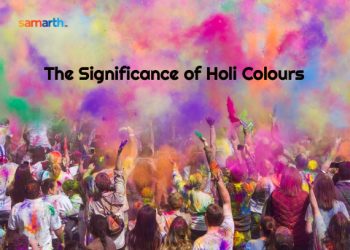The harvest festivals are here, and this week we will celebrate Lohri, Makara Sankranthi, Pongal, Magh Bihu, Uttarayan, Sakrat, Sukarat, Poush Sankranti, and more. Almost every state in India celebrates it with a different name and rituals, while there is an underlying celebration. Various elements, such as the sun, the earth, the fire, etc., are worshipped with offerings. People harvest their crops, offer these elements, and start the next agricultural season with song, dance, and good times. In most of North India and North East, this is a community festival where people sing, dance and feast together to ring in the festivities. This community celebration was also a way to ensure everyone celebrated the festival.
We will look at the Punjabi Lohri festival and see how they celebrate it. This year, it falls on 13th January. What most people know Lohri for is the bonfire around which the people dance. But, the festival has much more stories and significance than that. It is a harvest and winter solstice festival. It marks the northward journey of the sun, which is why it is called Uttarayan. This day is said to be the shortest day of the year and the night the longest. That is what most Lohri celebrations happen after sundown. Lohri marks the end of the winter and rings in the bright summer days, known as Basant Ritu.
The Stories:

Join Now >
How did the name Lohri come about? Some say it is because of Loi, the wife of Saint Kabir. Others say it is a shortened version of Til and Rorhi, Tilrorhi, Lohri in short. Til is sesame, and Rorhi is jaggery, and these two are the main ingredients for dishes cooked for Sankranti around the country and not just in Punjab. People offer these sweets to the fire god for purification. Consuming these during this time is also said to detoxify our bodies.
Some stories suggest that Lohri is derived from Loh, which indicates the warmth of the fire associated with the Lohri festival. One legend links Lohri to Holika and the story of Prahlad. The new Punjabi financial year Maghi kicks off after Lohri and symbolises new beginnings. Visiting families, kite flying, praying in temples, taking a dip in the holy river, etc., are all part of the Sankranti celebrations around this region.
The Lohri Bonfire:
So, what is the significance of the Lohri bonfire, which is associated with the Lohri festival? It is a holy bonfire, signifying Agni, the god of fire, and helps remove all negativity and herald new beginnings. People sing, dance, and circle the fire praying for prosperity, fortune, and the removal of all obstacles from life. The circling of the bonfire is called parikrama. People offer food with Til and jaggery to the god of fire. Farmers thank the god of fire by saying, Aadar aye dilather jaye. It means – may honour come and poverty disappear.
Lohri Foods:
On Lohri day, you get to see the best of the Punjabi winter foods like Sarson Ka Saag and Makke Di Roti, Pindi Channe, Gur Ki Roti, Gur Ka Halwa, Til Aur Gur ki Chikki, Layi Chana, Chole Bature, Makhane Ki Kheer and more. People also prepare Til or Gond Laddoos, Panjiri, and Pinni.
Customs:
Children visit houses in the morning singing praises of Dulha Bhatti, the Punjabi Robinhood who helped the poor and saved girls from slavery. People give money to the children who visit their houses as otherwise it is considered inauspicious. In the evening, people gather around huge bonfires lit ceremoniously and throw sweets, Layi (puffed rice), Phully (popcorn), and Sugarcane sticks into it. These offerings are said to spread fragrance in the air. People dress in traditional new clothes and exchange greetings.
The first Lohri of a new bride or a new-born is a great occasion for celebration at the in-laws’ place. The new bride dresses in the finest traditional jewellery. The bride and groom sit together, and family and friends bless them with gifts. For a new-born, all elders come together and bless the mother and child, and near and dear ones gift them lovingly. The new-born holds a comb as part of the ritual. Taking the new-borns around the bonfire is considered especially auspicious for a bright future.









